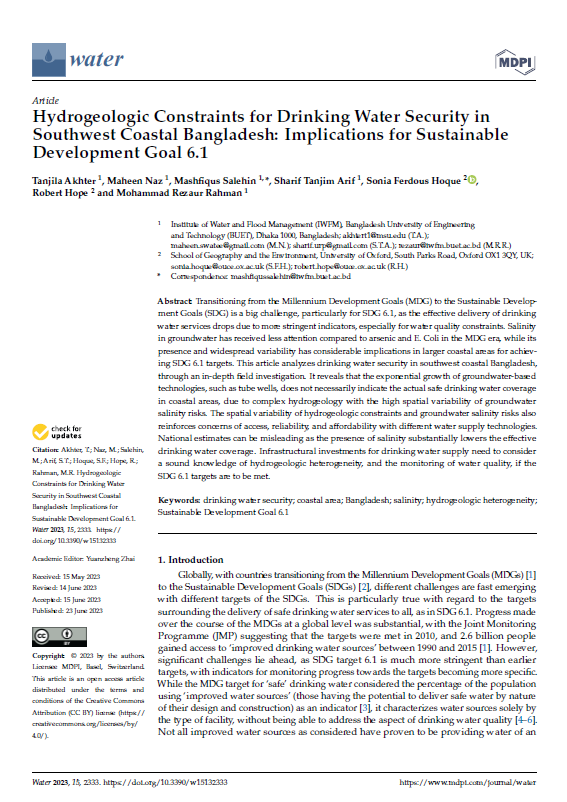Authors: Tanjila Akhter, Maheen Naz, Mashfiqus Salehin, Sharif Tanjim Arif, Sonia Ferdous Hoque, Robert Hope and Mohammad Rezaur Rahman
Transitioning from the Millennium Development Goals (MDG) to the Sustainable Development Goals (SDG) is a big challenge, particularly for SDG 6.1, as the effective delivery of drinking water services drops due to more stringent indicators, especially for water quality constraints. Salinity in groundwater has received less attention compared to arsenic and E. Coli in the MDG era, while its presence and widespread variability has considerable implications in larger coastal areas for achieving SDG 6.1 targets. This article analyzes drinking water security in southwest coastal Bangladesh, through an in-depth field investigation. It reveals that the exponential growth of groundwater-based technologies, such as tube wells, does not necessarily indicate the actual safe drinking water coverage in coastal areas, due to complex hydrogeology with the high spatial variability of groundwater salinity risks. The spatial variability of hydrogeologic constraints and groundwater salinity risks also reinforces concerns of access, reliability, and affordability with different water supply technologies. National estimates can be misleading as the presence of salinity substantially lowers the effective drinking water coverage. Infrastructural investments for drinking water supply need to consider a sound knowledge of hydrogeologic heterogeneity, and the monitoring of water quality, if the SDG 6.1 targets are to be met.

